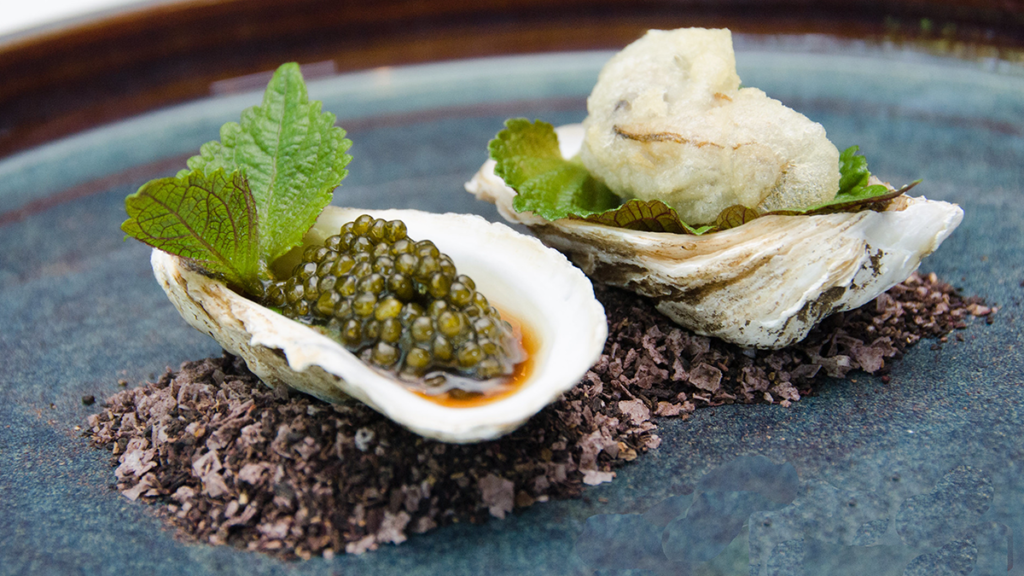Caviar, often synonymous with luxury and sophistication, is one of the most prized culinary items in the world. From extravagant banquets to intimate celebrations, caviar has long been a symbol of exclusivity, refinement, and indulgence. But what is caviar, and why has it earned such a revered reputation? This article delves deep into the history, production, varieties, and cultural significance of caviar, unraveling the mystery behind this iconic delicacy.
What Is Caviar?

At its core, caviar refers to the salted, cured roe (fish eggs) of certain types of fish, most notably the sturgeon. Sturgeon are prehistoric fish that belong to the family Acipenseridae, and they are found primarily in the rivers and seas of the Northern Hemisphere. True caviar comes exclusively from sturgeon, though the term is sometimes loosely applied to roe from other species, such as salmon or trout, referred to as “red caviar.”
Caviar is classified as a delicacy due to its unique texture, flavor, and complex production process. The individual eggs are small, glossy, and vary in color, ranging from pearly gray to jet black. When consumed, caviar delivers a rich and buttery flavor with subtle oceanic notes, followed by a satisfying pop of texture. The flavor profile can differ depending on the species of sturgeon and its environment.
The History of Caviar
The origins of caviar date back thousands of years, with its roots deeply intertwined in the culinary traditions of ancient civilizations. The word “caviar” is thought to come from the Persian word “khav-yar”, which means “cake of strength.” Historical records indicate that caviar was first enjoyed by the Persians, who prized sturgeon roe for its nutritional value and believed it had healing properties.
During the Middle Ages, caviar gained popularity in Russia, where it became a culinary staple among royalty and nobility. Russian tsars developed a preference for caviar, often pairing it with vodka as a symbol of affluence. By the 19th century, caviar made its way to Western Europe and the United States, where it quickly became associated with luxury dining.
Interestingly, in the late 1800s, the United States was a leading producer of caviar, and it was widely available and relatively inexpensive. Bars in America even served caviar as a free snack alongside beer, similar to peanuts or pretzels today. However, as sturgeon populations declined due to overfishing and habitat destruction, caviar became scarce, driving up its value and restoring its exclusivity.
How Caviar Is Produced
The production of caviar is an intricate and labor-intensive process that requires careful handling and expertise. The journey begins with sourcing sturgeon roe, which is harvested from mature female fish. Traditionally, this process involved killing the sturgeon to extract the eggs, but modern techniques such as “milking” have emerged to harvest roe without sacrificing the fish, addressing ethical and sustainability concerns.
Once the roe is extracted, it undergoes a meticulous cleaning and curing process. Salt is added to the eggs to enhance their flavor and preserve them for longer periods. The ratio of salt to roe is critical, as it can significantly affect the taste, texture, and quality of the final product. After curing, the caviar is sorted, graded, and packed into containers. It is then refrigerated to maintain its freshness before being shipped to markets or high-end restaurants worldwide.
The quality of caviar depends on several factors, including the species of sturgeon, the size and texture of the eggs, and the skill of the producer. Premium caviar is characterized by uniform egg size, glossy appearance, and a refined taste with minimal saltiness.
Types of Caviar

There are numerous types of caviar, each distinguished by the species of sturgeon from which it is derived. The most renowned varieties include:
Beluga Caviar: Beluga caviar, harvested from the endangered Beluga sturgeon native to the Caspian Sea, is considered the rarest and most luxurious caviar in the world. Its large, pearlescent eggs deliver a rich, creamy flavor that is unparalleled in taste. Due to its rarity, Beluga caviar commands exorbitant prices and is heavily regulated in many countries.
Osetra Caviar: Osetra caviar comes from the Russian sturgeon and is valued for its medium-sized eggs and nutty flavor. Colors range from golden to brownish-gray, and it is often favored by gourmands for its complex taste and texture.
Sevruga Caviar: Sevruga caviar is derived from the smaller Sevruga sturgeon. Its eggs are smaller in size but packed with intense flavor, featuring a briny yet smooth profile. Sevruga caviar is more widely available and slightly more affordable than Beluga and Osetra varieties.
Kaluga Caviar: Kaluga caviar is harvested from the Kaluga sturgeon, which is often referred to as the “river Beluga.” Its eggs closely resemble Beluga caviar, offering a buttery and rich taste at a lower price point.
Hackleback Caviar: Hackleback caviar, sourced from the American sturgeon, is popular in the United States. Its smaller eggs feature an earthy and nutty flavor, making it a more accessible choice for caviar enthusiasts.
In addition to these traditional options, there are alternatives like salmon roe (“red caviar”) and trout roe that cater to more budget-conscious consumers while offering their own distinct flavors.
The Cultural Significance of Caviar

Caviar has transcended its role as a culinary item, becoming a symbol of wealth, elegance, and celebration. Its association with luxury is evident in the rituals surrounding its consumption. Caviar is often served with specialized utensils, such as mother-of-pearl spoons, to preserve its delicate flavor and texture. It is paired with champagne or vodka, enhancing the overall sensory experience.
Caviar is also featured prominently in haute cuisine, appearing on the menus of Michelin-starred restaurants and in signature dishes crafted by world-renowned chefs. From classic canapés to innovative gastronomic creations, caviar adds a touch of refinement to any dish.
Beyond the dining table, caviar holds cultural significance in regions such as Russia and Iran, where it is deeply embedded in culinary traditions. Russian aristocrats famously paired caviar with blinis and sour cream, while Persian customs often included caviar as a gift during celebrations.
Sustainability Challenges and Ethical Considerations
The popularity of caviar has led to significant challenges in sustainability and conservation. Overfishing and habitat destruction have severely depleted sturgeon populations, leading to their classification as endangered species. In response, efforts have been made to regulate the caviar industry and promote sustainable practices, such as aquaculture.
Aquaculture involves farming sturgeon in controlled environments to produce caviar without harming wild populations. While farmed caviar offers a more sustainable alternative, it requires investment in technology and resources to maintain quality and ethical standards.
Consumers play a vital role in promoting sustainable caviar practices by choosing products labeled as farmed or certified by environmental organizations.
Conclusion
Caviar is more than just a food item—it is an experience, a tradition, and a symbol of indulgence. Its rich history, meticulous production, and cultural significance have earned it a place among the world’s most treasured delicacies. While its association with luxury remains strong, increasing awareness of sustainability ensures that future generations can continue to enjoy caviar responsibly.
Also Read: Do Fish Drink Water? The Surprising Truth About Underwater Hydration






